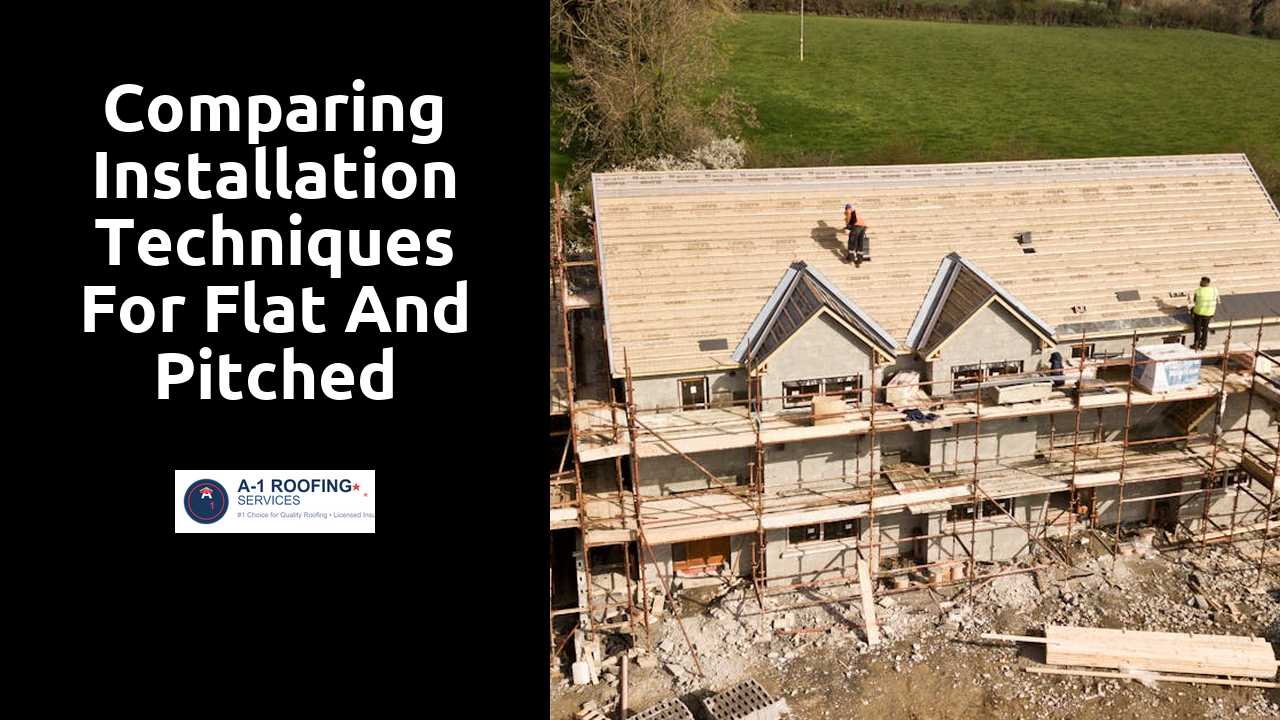
Comparing Installation Techniques for Flat and Pitched Commercial Roofs
Table Of Contents
Common Installation Methods for Pitched Roofs
Pitched roofs are predominantly installed using two main techniques: structural framing and trusses. Structural framing involves building custom rafter systems that provide support and shape for the roof. This method allows for a high degree of customization, accommodating complex designs and varying slopes. Trusses, on the other hand, are pre-engineered frameworks composed of interconnected triangles. They are often favored for their efficiency and quick installation, making them a popular choice for many commercial projects.
Another commonly used method is the application of a roof deck on top of the framing or trusses. This deck serves as the substrate for various roofing materials such as asphalt shingles, metal sheets, or tiles. Properly installed, the roof deck ensures durability and support, maintaining structural integrity against environmental pressures. The choice of roofing material can influence the installation technique, with some requiring specific underlayment or flashing installations to enhance performance and longevity.
See here for more great tips.
Traditional vs. Modern Installation Approaches
Traditional installation methods for pitched roofs often rely on time-tested practices that have been passed down through generations. Craftsmen typically use materials such as wood shingles, clay tiles, or slate, which require skilled labor for precise fitting and finishing. These methods emphasize durability and aesthetics, with an emphasis on creating a structure that can withstand the test of time. The processes can be labor-intensive, often involving several layers of materials to ensure effective waterproofing and longevity.
In contrast, modern installation techniques leverage advancements in technology and materials to streamline the roofing process. Utilizing engineered products like synthetic underlayments and interlocking metal panels, these methods can reduce installation time while still achieving high performance. Innovations such as automated cutting tools and digital design software enhance precision, allowing for quicker adaption to various roof designs and reducing material waste. These contemporary approaches prioritize efficiency and scalability, catering to the demands of rapid construction schedules in today's commercial projects.
Weather Considerations for Flat Roofs
Flat roofs are particularly susceptible to weather-related concerns, primarily due to their lack of pitch, which can lead to water pooling. Proper drainage systems are essential, as stagnant water can contribute to leaks and structural damage over time. Maintenance of drains, scuppers, and gutters should be prioritized in design and ongoing upkeep. In regions prone to heavy rainfall or snowfall, ensuring an adequate drainage plan can mitigate the risk of water accumulation and extend the lifespan of the roofing materials.
In addition to water management, temperature fluctuations pose a significant challenge for flat roofs. Extreme heat can cause materials to expand and become brittle, leading to cracks and loss of integrity. Conversely, cold temperatures can result in material contraction. Selecting the right roofing material that can withstand these temperature variances is crucial. Insulation also plays a vital role in maintaining energy efficiency, particularly in climates with significant temperature shifts throughout the year.
Managing Water Drainage and Ponding
Effective water drainage is vital for flat roofs to prevent ponding, which can compromise the integrity of the roofing system. Installing a reliable drainage system involves careful planning of the layout and positioning of drains. Designers often use tapered insulation or built-in slopes to facilitate water flow toward drains, ensuring that standing water is minimized. In addition, the proper sizing of outlets is crucial; undersized drains may lead to blockage and subsequent water accumulation.
Regular maintenance plays a significant role in managing potential ponding issues. Roof inspections should be scheduled to identify debris, clogs, or deterioration in the drainage system. Keeping the roof surface clear of leaves and other materials helps maintain optimal drainage conditions. Furthermore, implementing a proactive approach can extend the lifespan of the roofing system and minimize costly repairs associated with water damage and structural issues.
Weather Considerations for Pitched Roofs
Pitched roofs are designed to effectively shed water and resist the accumulation of snow. Their angular shapes facilitate drainage, preventing water from pooling, which can lead to structural issues over time. Regional climate factors play a significant role in determining the optimal pitch angle. Areas that experience heavy snowfall benefit from steeper roofs to help prevent snow loads from becoming excessively heavy and potentially damaging to the structure.
Wind resistance is another critical consideration for pitched roof installations. The steeper design can help deflect wind, reducing the risk of uplift and damage during severe weather events. Locations prone to high winds may require additional reinforcement and anchoring techniques to ensure stability. Proper material selection also plays a vital role in durability and performance, with options such as asphalt shingles or metal roofing chosen for their specific weather-resistant properties.
Snow Load and Wind Resistance
In regions prone to heavy snowfall, the design of pitched roofs must account for snow load to prevent structural failures. The sloped surface allows for better snow shedding, reducing accumulation and minimizing the risk of excessive weight on the roof structure. Proper calculations during the planning phase help ensure that rafters and trusses are adequately sized to support potential snow loads specific to the area's historical data.
Wind resistance is another critical factor for pitched roofs, especially in hurricane-prone zones. The aerodynamic shape of these roofs aids in deflecting wind, which can significantly reduce the pressure exerted on the structure. Installing roofing materials that are appropriately rated for high winds is essential for enhancing overall durability and preventing damage during severe weather events.
Related Links
Preparing Your Building for a Commercial Roof InstallationCommon Mistakes to Avoid During Commercial Roofing Installation